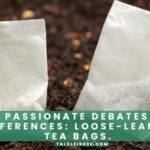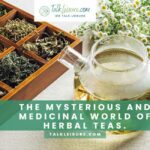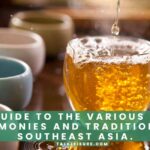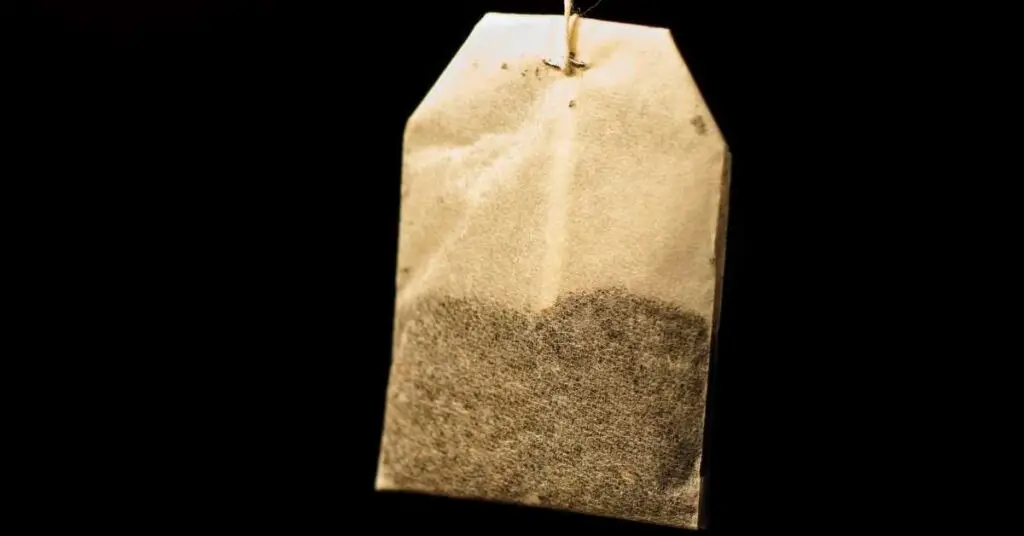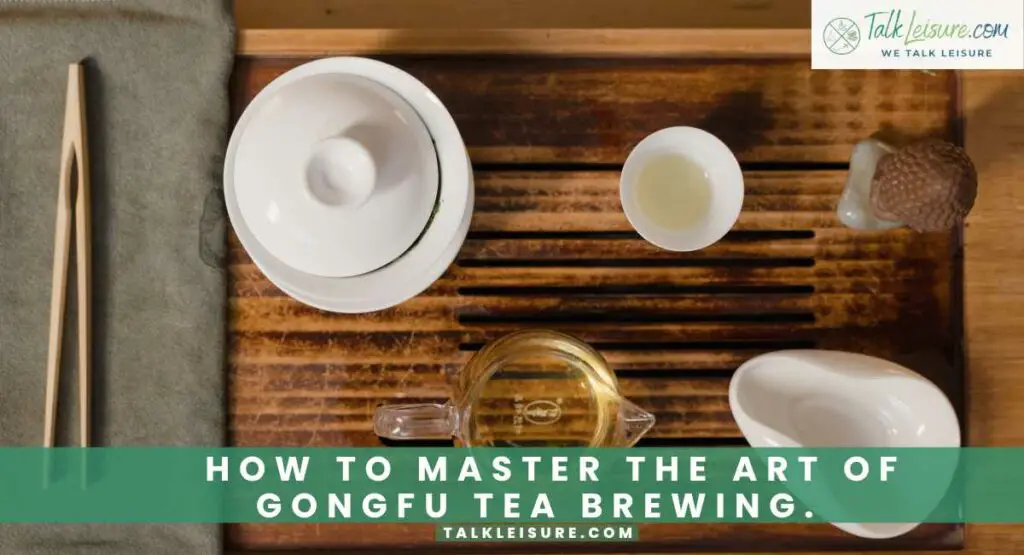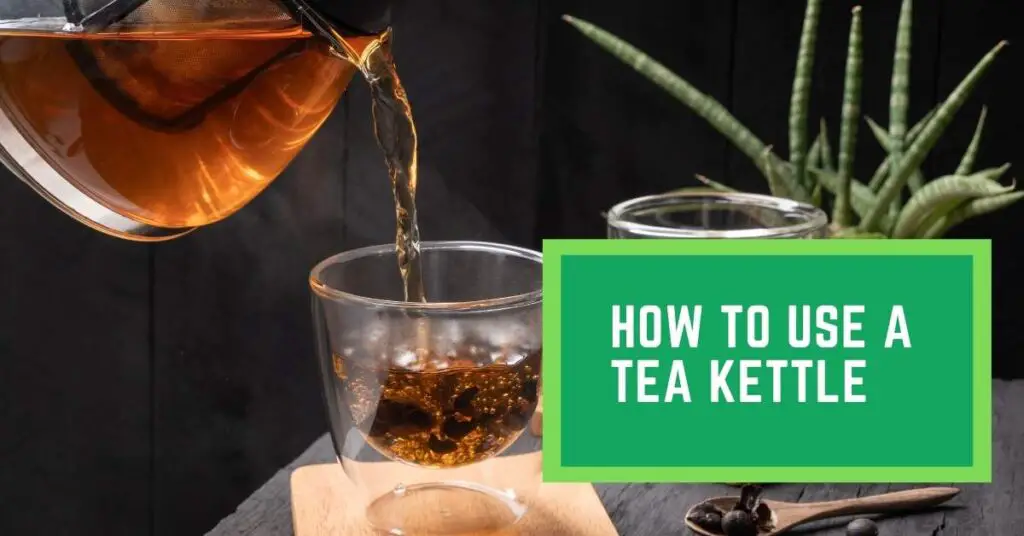Welcome to a journey through the captivating world of tea grades and classifications. Beyond the familiar distinctions of black, green, and herbal teas lies a nuanced universe of leaf quality, processing techniques, and regional traditions.
Understanding tea grades empowers you to select brews that resonate with your palate and preferences.
From the refined elegance of Silver Needles to the bold richness of Assam, each grade holds its own story.
Join us as we unravel the secrets behind tea labels, explore the influence of terroir, and savor the cultural rituals that have elevated tea to an art form. Let’s embark on this tea-tasting adventure together!
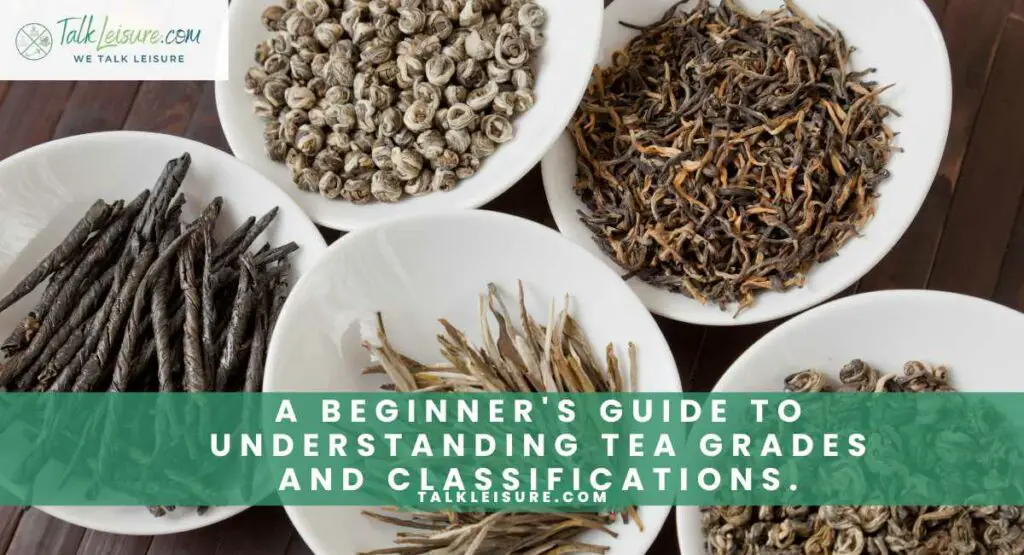
Introduction to Tea Grades
Hey there, fellow tea enthusiasts! If you’re anything like me, you know that the world of tea can be as vast and intriguing as it is delicious. But have you ever wondered why some teas seem to stand out from the rest? Well, that’s where tea grades come into play.
Unlocking the Secrets of Tea Grades
Imagine stepping into a world where each tea leaf tells a story. That’s precisely what tea grading does. It’s like a secret code that gives you insights into the quality, flavor, and character of the tea you’re about to savor.
Why Tea Grades Matter
Now, you might be thinking, “Does it really make a difference? Isn’t all tea just, well, tea?” Not quite! Understanding tea grades can take your tea-drinking experience to a whole new level. It’s the key to finding that perfect cuppa that suits your taste buds, whether you’re in the mood for a bold wake-up call or a calming afternoon retreat.
The Art and Science of Tea Grading
Tea grading isn’t just a random assortment of letters or numbers slapped on a packet. It’s a delicate dance between nature, craftsmanship, and tradition. Leaf quality, processing techniques, and the environment where the tea is grown – all these factors come together to determine its grade.
Let’s Dive Deeper
In this section, we’re going to unravel the mysteries behind tea grades. We’ll explore how they influence the taste, aroma, and even the price of your favorite brews. Get ready to embark on a journey through the fascinating world of tea, one grade at a time.
Ready? Let’s brew up some knowledge!
Types of Tea
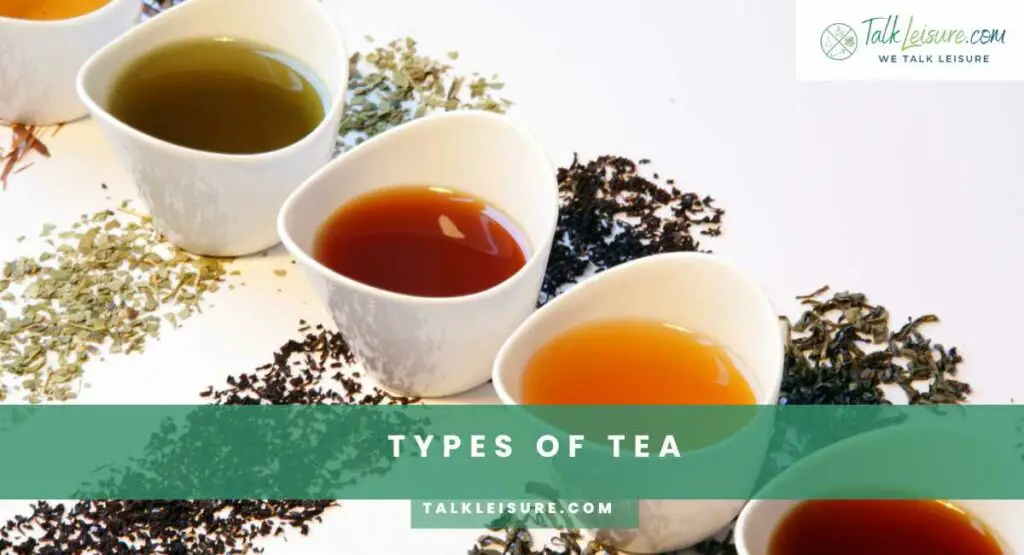
Alright, tea connoisseur, let’s dive into the diverse world of tea! There’s more to it than just your standard black or green brew. Each type offers a unique flavor profile and a story of its own.
1. Black Tea
Bold and Robust: The Dark Elixir
Black tea is the powerhouse of the tea world. Its leaves undergo full oxidation, resulting in a rich, dark color and a robust, full-bodied flavor. Think of it as the coffee of the tea universe—perfect for those who like a strong, awakening brew to kickstart their day.
2. Green Tea
The Elixir of Vitality
Green tea is your ticket to a refreshing, earthy experience. It’s minimally oxidized, preserving the bright green color and a delicate, grassy taste. Packed with antioxidants and known for its health benefits, green tea is like a sip of vitality in a cup.
3. Oolong Tea
The Middle Ground: Halfway Between Green and Black
Oolong tea is the middle child of the tea family, with a partial oxidation process that imparts a range of flavors, from floral and fruity to nutty and toasty. It strikes a beautiful balance between the briskness of green tea and the depth of black tea.
4. White Tea
The Gentle Whisper of Tea
White tea is the epitome of elegance. It’s minimally processed and made from young tea leaves and buds. This delicate brew offers a subtle, almost ethereal flavor with a hint of sweetness. If you’re looking for a soothing, mellow experience, white tea is your go-to.
5. Herbal Tea
Beyond Camellia Sinensis: Exploring Infusions
Herbal teas are a category all their own, made from various dried herbs, flowers, fruits, and spices. From soothing chamomile to zesty peppermint, these brews offer a world of flavors and aromas without a trace of actual tea leaves.
6. Specialty Teas
Exploring Unique and Rare Finds
Specialty teas are the gems of the tea world. Think of exquisite offerings like Gyokuro, Matcha, and Silver Needle. These teas often come with their own set of rituals and are known for their exceptional quality and distinctive flavors.
Which Path Will You Choose?
Now that we’ve scratched the surface of the different tea types, it’s time to embark on your own tea-tasting adventure. Each type holds a world of flavors waiting to be discovered, and who knows, you might just find your new favorite brew.
So, which path will you choose? The boldness of black, the vitality of green, or perhaps the gentle whisper of white? The tea world is your oyster!
Factors Affecting Tea Grades
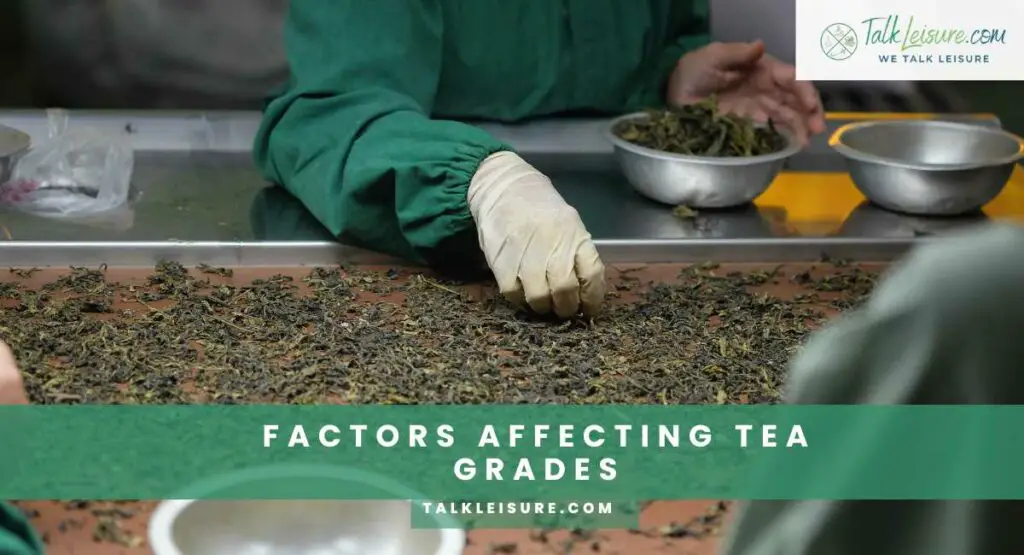
Welcome to the behind-the-scenes tour of the tea world! Ever wondered why two teas of the same type can taste so different? It all comes down to a handful of factors that influence the grading process.
1. Leaf Quality
The Canvas of Tea-Making
The quality of tea leaves is like a canvas for an artist. It sets the stage for everything that follows. Young, tender leaves are often preferred for their delicate flavors, while older leaves can bring a bolder, more robust character to the brew. The careful selection of leaves is a crucial step in determining the final grade.
2. Processing Methods
Crafting Magic in Every Leaf
Tea-making is an art, and the way leaves are processed can make all the difference. From rolling to drying, each step is carefully executed to coax out the desired flavors. Black teas are fully oxidized, green teas are minimally processed, and oolong teas fall somewhere in between. This dance of processing methods adds depth and complexity to the final product.
3. Terroir and Growing Conditions
Where Nature Leaves its Mark
Just like grapes for wine, where and how tea is grown can have a profound impact on its flavor. Factors like soil type, altitude, climate, and even the surrounding flora contribute to what’s known as terroir. A tea grown in the misty hills of Darjeeling will have a distinctly different character from one cultivated in the sunny fields of Assam.
4. Artisanal Craftsmanship
The Hands That Shape Your Brew
Tea-making is an ancient craft, often passed down through generations. Skilled artisans play a crucial role in shaping the final product. Their knowledge and expertise in plucking, withering, rolling, and firing the leaves are instrumental in creating teas of exceptional quality.
The Symphony of Factors
Imagine all these factors coming together in a symphony, each contributing its own note to create a harmonious brew. It’s this intricate dance of leaf selection, processing, environment, and craftsmanship that leads to the diverse range of tea grades we have today.
Your Passport to Tea Appreciation
Armed with this knowledge, you’re now equipped to appreciate tea on a whole new level. The next time you savor a cup, you’ll know that it’s the result of a carefully orchestrated process, with nature and human hands working in tandem.
So, let’s raise our cups to the art and science of tea-making!
Common Tea Grades and Classifications
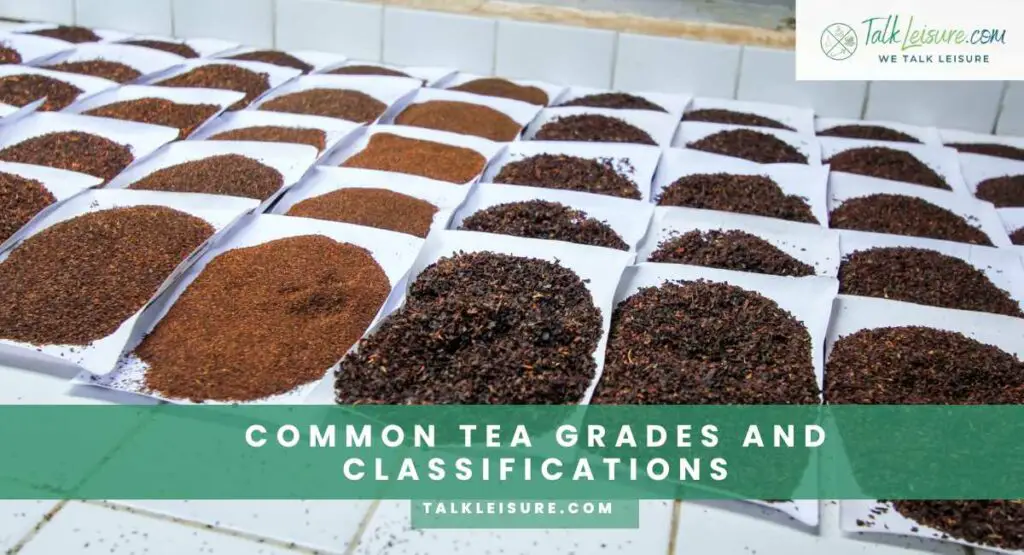
Welcome to the heart of the matter, where we unravel the codes that tea producers use to classify their brews. It’s like learning a new language, but once you grasp it, you’ll have a whole new appreciation for the world of tea.
1. Broken Leaf vs. Whole Leaf
The Anatomy of Tea Leaves
Tea leaves come in various shapes and sizes, and their appearance can tell you a lot about the grade. Whole leaves, as the name suggests, are intact and often signify higher quality. Broken leaves, on the other hand, can brew a bit stronger and are often used in tea bags. Understanding these distinctions helps you navigate the world of teas with confidence.
2. Dust and Fannings
The Tiny Powerhouses of Flavor
Dust and fannings are the tiniest fragments of tea leaves, often found in tea bags. While they may not look impressive, they can brew a robust cup in no time. They’re commonly used for convenience and speed, making them a go-to for busy mornings.
3. Orthodox vs. CTC (Crush, Tear, Curl) Processed Teas
The Artisans vs. The Innovators
Orthodox teas are made through a more traditional, handcrafted process. The leaves are carefully rolled, twisted, or shaped to preserve their natural form. On the other hand, CTC processing involves mechanized methods that result in smaller, uniform particles. This difference in processing leads to distinct flavor profiles, with orthodox teas often prized for their complexity.
Decoding Tea Labels
Ever come across labels like OP, FOP, BOP, or SFTGFOP and wondered what they meant? These are part of a grading system used in different tea-producing regions, each offering insights into the leaf quality and processing methods. Understanding these acronyms is like having a cheat sheet for deciphering tea quality at a glance.
Embracing the Diversity
As you explore the world of tea grades, you’ll come to appreciate the vast spectrum of options available. From whole leaves that unfurl gracefully in your cup to finely ground powders that release their essence instantly, each grade offers a unique tea-drinking experience.
Your Tea Journey Continues
Armed with this knowledge, you’re well on your way to becoming a tea aficionado. The next time you’re perusing a selection of teas, you’ll have a deeper understanding of what lies within those leaves.
Cheers to your evolving tea palate!
Understanding Tea Labels
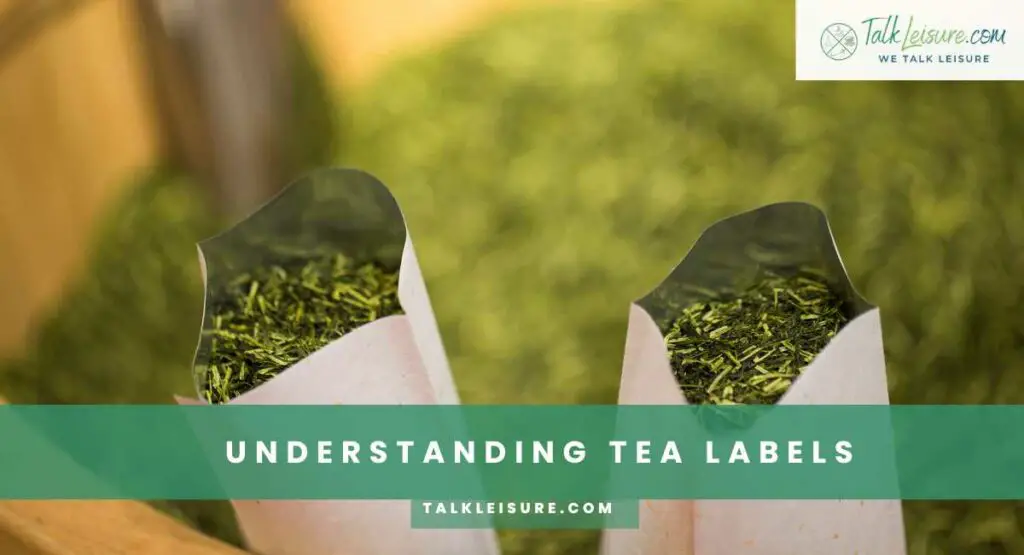
Alright, tea explorer, it’s time to decipher those mysterious labels that adorn tea packaging. They may seem like a secret code, but once you crack it, you’ll have a clear window into the world of tea grades.
OP, FOP, BOP, SFTGFOP: Decoding the Acronyms
Unraveling the Alphabet Soup
Have you ever wondered what those letters on your tea label mean? They’re not just random jumbles of letters; they’re part of a grading system that tells you about the size and quality of the tea leaves.
- OP (Orange Pekoe): Contrary to what the name suggests, it has nothing to do with oranges. It actually refers to whole, unbroken tea leaves with a consistent size.
- FOP (Flowery Orange Pekoe): This grade includes young, tender leaves with a higher proportion of tips, which are the budding ends of the tea plant. They add a delicate flavor to the brew.
- BOP (Broken Orange Pekoe): As the name implies, these leaves are broken into smaller pieces. They brew a bit stronger and are commonly found in tea bags.
- SFTGFOP (Super Fine Tippy Golden Flowery Orange Pekoe): This mouthful of an acronym indicates a high-grade tea with a generous amount of tips. It’s often associated with premium teas.
Grading Systems in Different Tea-Producing Regions
From Assam to Darjeeling: A World of Labels
Different tea-producing regions around the world have their grading systems, each tailored to their unique tea cultures and production methods. Understanding these regional labels gives you insights into the specific qualities of the teas.
- Indian Tea Grading: From the bold, malty Assams to the delicate, floral Darjeeling, Indian teas use terms like TGFOP (Tippy Golden Flowery Orange Pekoe) and FTGFOP (Finest Tippy Golden Flowery Orange Pekoe) to denote quality.
- Chinese Tea Grading: China, the birthplace of tea, has its own set of grading terms like Chun Mee (Precious Eyebrows) and Gunpowder, which reflect the leaf style and quality.
- Sri Lankan (Ceylon) Tea Grading: Ceylon teas are known for their bright, lively flavors. Grades like OP1 and BOPF (Broken Orange Pekoe Fannings) signify leaf size and quality.
The Power of Knowing
Armed with this knowledge, you can confidently navigate the world of tea labels. You’ll be able to discern whether a tea is likely to be bold and brisk or delicate and floral, just by glancing at the label.
Your Journey Continues
Now that you’ve unlocked the secrets of tea labels, you’re ready to embark on your tea-tasting adventure armed with a newfound understanding. The next time you peruse a selection, those labels won’t seem like a code but rather an invitation to a world of flavors.
Happy sipping!
Tasting Notes by Tea Grade

Welcome to the sensory journey of tea tasting! Just like fine wines, teas come with their own unique flavor profiles and aromas. Let’s dive into the delightful world of tasting notes, and discover what each tea grade has to offer.
Flavor Profiles of Different Tea Grades
Black Tea
- Assam (BOP): Bold, malty, and robust with a rich, full-bodied flavor. Perfect for a hearty morning brew.
- Darjeeling (FTGFOP1): Delicate, floral, and sometimes fruity. Known as the “Champagne of Teas.”
Green Tea
- Sencha: Grassy, vegetal, and mildly astringent. Offers a refreshing and revitalizing experience.
- Dragon Well (Longjing): Nutty, sweet, and slightly creamy. Celebrated for its flat, jade-green leaves.
Oolong Tea
- Tie Guan Yin (Iron Goddess of Mercy): Floral, orchid-like, and lightly oxidized. Balances the freshness of green tea with the depth of black tea.
- Formosa Oolong: Fruity, with notes of peach or apricot. A delightful dance of flavors in every sip.
White Tea
- Silver Needle: Delicate, sweet, and often described as honey-like. Made from unopened buds for a pure, refined taste.
Herbal Tea
- Chamomile: Calming, apple-like, and with a subtle floral aroma. Perfect for winding down in the evening.
- Peppermint: Refreshing, minty, and invigorating. Clears the senses and aids digestion.
Aromas and Characteristics
The Dance of Aromas
Apart from taste, the aroma of a tea is equally important in shaping your experience. Here are some common aromas associated with different tea grades:
- Floral: Found in teas like Darjeeling and Tie Guan Yin. Think of it as a garden in a cup.
- Earthy: Often present in aged teas like Pu-erh. Imagine the scent of damp earth after a rain.
- Nutty: Notably in teas like Dragon Well. It’s like a comforting embrace from your favorite nut.
- Fruity: A characteristic of some oolong and green teas. Picture orchards in full bloom.
Finding Your Flavor
Now that you have a glimpse into the world of tasting notes, it’s time to embark on your own tea-tasting adventure. Pay attention to how each sip unfolds on your palate, and let your senses guide you to your next favorite brew.
Remember, there’s no right or wrong in tea tasting. It’s all about what brings you the most joy in each cup.
Cheers to discovering your perfect brew!
Tea Quality vs. Price
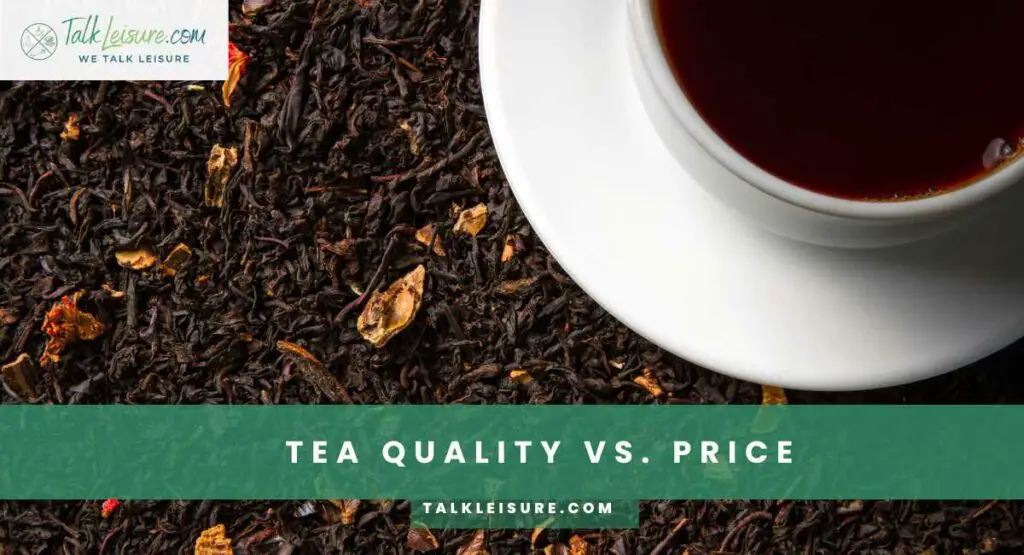
Ah, the age-old conundrum: is a more expensive tea worth the splurge? Let’s unravel the relationship between tea quality and price, and discover how to find the perfect balance for your palate and budget.
How Grades Influence Pricing
The Price Tag Puzzle
Tea grades play a significant role in determining the price of a tea. Higher-grade teas often command a premium due to factors like superior leaf quality, careful processing, and the expertise of the artisans involved. These teas are like the fashion of the tea world, meticulously crafted for a discerning audience.
Finding Value in Different Tea Grades
Hidden Treasures in Every Grade
Don’t be fooled into thinking that only the most expensive teas offer exceptional quality. While top-tier teas are undoubtedly exquisite, there are hidden gems in lower grades as well. Some teas, like quality BOP (Broken Orange Pekoe) blacks, can offer fantastic flavor at a more accessible price point. It’s all about knowing where to look.
The Experience Factor
Priceless Moments in Every Sip
Consider tea not just a beverage, but an experience. A high-quality tea can transport you to misty mountains or fragrant gardens with every sip. If the experience is what you’re seeking, investing in a premium-grade tea may be well worth it. However, if you’re after a daily brew, there are excellent options available at more modest price points.
Tea Quality and Your Preferences
Tailoring Your Tea Journey
Ultimately, the best tea for you is the one that aligns with your taste and preferences. Whether you’re a connoisseur seeking rare and exquisite teas or a casual drinker looking for an everyday delight, there’s a tea out there that’s perfect for you.
Balancing Act
Remember, the tea world is a vast and diverse landscape. There’s no one-size-fits-all answer when it comes to quality versus price. It’s about finding the sweet spot that brings you the most joy in every cup.
So, whether you’re sipping a prized, hand-rolled oolong or enjoying a comforting mug of your favorite black tea, know that each brew has its unique value, waiting to be discovered.
Specialty and Rare Tea Grades
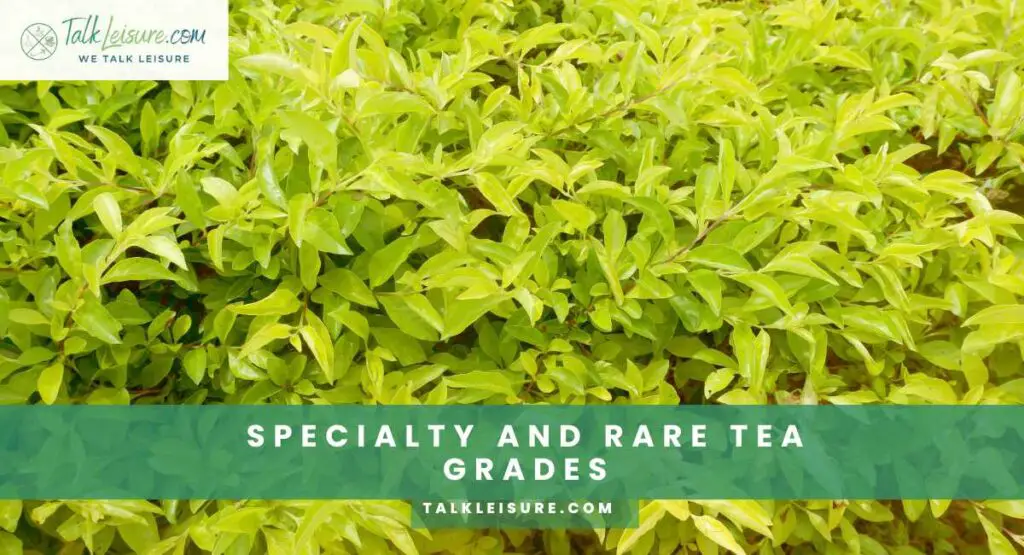
Ah, now we venture into the realm of the extraordinary, where tea becomes not just a beverage, but a work of art. Buckle up, because we’re about to explore some of the most exquisite and rare tea grades the world has to offer.
Golden Tips
The Glittering Jewels of the Tea World
Golden Tips, also known as Tippy Teas, are a rare and highly sought-after grade. They consist almost entirely of the young, golden-hued buds of the tea plant. This grade is often associated with teas like Darjeeling and Yunnan, known for their delicate yet vibrant flavor profiles.
Silver Needles
A Symphony of Elegance and Purity
Silver Needle tea is a true treasure. It’s crafted from only the unopened buds of the tea plant, which are covered in fine, downy hairs, resembling silver needles. This white tea grade offers a subtle, sweet flavor with a velvety mouthfeel. It’s a true testament to the artistry of tea-making.
Dragon Well (Longjing)
A Legend in Every Leaf
Dragon Well, or Longjing, is a renowned green tea from Hangzhou, China. What sets it apart is its flat, jade-green leaves and a distinctive nutty, sweet flavor. This tea grade is celebrated not only for its taste but also for its cultural significance and intricate hand-processing techniques.
Matcha and Gyokuro
The Art of Shade-Grown Perfection
Matcha and Gyokuro are two of Japan’s most prized tea grades. Both are shade-grown, a process that enhances their flavor and chlorophyll content. Matcha, finely ground into a vibrant green powder, is used in traditional Japanese tea ceremonies. Gyokuro, known for its sweet, umami-rich taste, offers a luxurious tea-drinking experience.
Beyond the Ordinary
These specialty teas are like the rare gems of the tea world. Their unique production methods, exceptional leaf quality, and distinctive flavor profiles make them coveted by tea enthusiasts worldwide. While they may come with a higher price tag, the experience they offer is truly one-of-a-kind.
Embracing the Extraordinary
As you explore the world of specialty and rare tea grades, you’re embarking on a journey of true tea connoisseurship. Each sip is an opportunity to savor the artistry, craftsmanship, and history that goes into creating these exceptional brews.
So, whether you’re indulging in the delicate elegance of Silver Needles or experiencing the vibrant richness of Matcha, know that you’re sipping on a piece of tea history.
Buying and Storing Tea by Grade
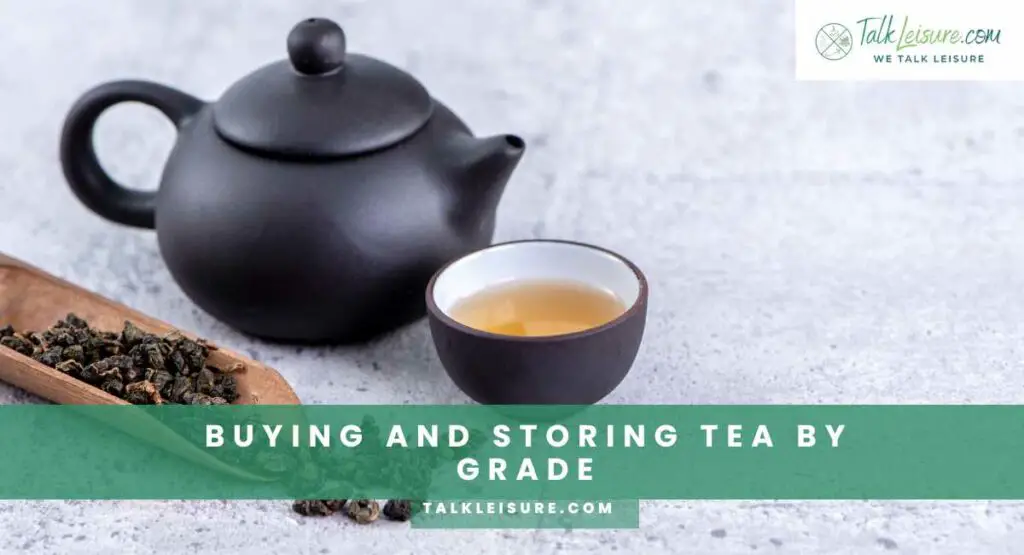
Congratulations! you’re on the cusp of becoming a true tea aficionado! Now, let’s dive into the practicalities of procuring and preserving your precious tea collection. It’s not just about the grade; it’s about how you care for it.
Tips for Selecting High-Quality Tea
Navigating the Tea Aisles
- Source from Reputable Suppliers: Look for trusted tea vendors or specialty shops that have a reputation for quality. They often have a curated selection of teas and can provide valuable recommendations.
- Examine the Leaves: If possible, inspect the tea leaves before purchase. High-quality teas should have intact, whole leaves with vibrant color and a pleasing aroma.
- Consider the Origin: Different regions have their specialties. For example, Darjeeling for delicate blacks, Dragon Well for nutty greens, and Yunnan for rich, earthy Pu-erh.
- Check for Certifications: Organic, fair trade and other certifications can be indicators of ethical and sustainable sourcing.
Proper Storage Techniques
Preserving the Freshness
- Air-Tight Containers: Invest in opaque, airtight containers to keep moisture and light at bay. Glass jars or ceramic containers with tight-fitting lids work well.
- Cool and Dark Environment: Store your teas in a cool, dark place, away from direct sunlight and temperature fluctuations. Avoid areas near the stove or windows.
- Avoid Strong Odors: Tea leaves are like sponges for aromas. Keep them away from strong-smelling spices, herbs, or any scented products.
- Separate Flavors: If you have multiple teas, store them separately to prevent flavor transfer. Use individual containers or sealable bags.
Label and Date
Organize for Optimal Enjoyment
- Label Your Teas: Clearly label each container with the type of tea and its grade. This prevents mix-ups and ensures you can quickly find the tea you’re in the mood for.
- Date of Purchase: Write down the date of purchase to keep track of freshness. Some teas have a shelf life and are best consumed within a certain timeframe.
Your Tea Oasis
By carefully selecting and storing your teas, you’re not just preserving leaves; you’re nurturing a treasure trove of flavors and aromas. Each cup will be a testament to your dedication to the art of tea.
Happy tea hunting and storing!
Tea Grade Certifications and Labels
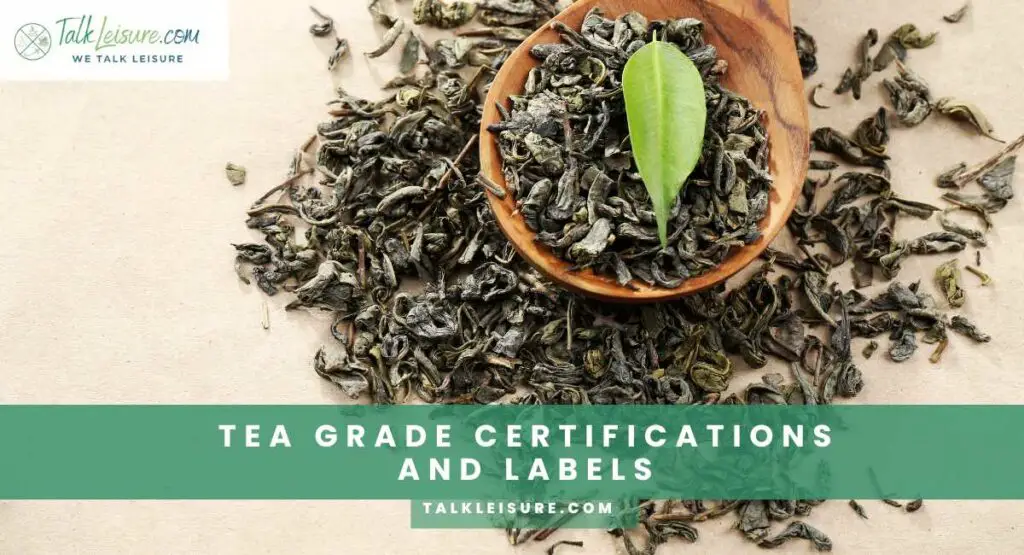
Tea isn’t just about flavor; it’s also about values. In this section, we’ll delve into the certifications and labels that not only guarantee quality but also reflect ethical and sustainable practices within the tea industry.
Organic, Fair Trade, and Other Certifications
Sipping with a Purpose
Organic Certification
Choosing organic tea means opting for a brew that’s been cultivated without synthetic pesticides or fertilizers. It’s a commitment to cleaner, healthier farming practices that benefit both the environment and the consumer.
Fair Trade
Fair Trade certification ensures that tea producers receive fair wages and ethical working conditions. By choosing Fair Trade teas, you’re supporting a more equitable and sustainable tea industry.
Rainforest Alliance
This certification encompasses a range of environmental and social standards. It signifies a commitment to conserving biodiversity, protecting ecosystems, and supporting local communities.
UTZ Certified
UTZ certification focuses on responsible and sustainable farming practices. It promotes better agricultural methods, better working conditions, and better care for nature.
Understanding the Importance of Ethical Sourcing
From Leaf to Cup: Tracing the Journey
Tea isn’t just a beverage; it’s a global story. Ethical sourcing involves ensuring that every step of the tea-making process, from the fields to your cup, is conducted with integrity and respect.
Empowering Tea Communities
Ethical sourcing empowers the communities that cultivate and process tea. It means fair wages, safe working conditions, and opportunities for growth and development.
Protecting the Environment
By choosing teas from companies committed to ethical sourcing, you’re supporting practices that conserve biodiversity, promote sustainable agriculture, and minimize environmental impact.
Quality and Transparency
Tea companies that prioritize ethical sourcing often invest in quality assurance, which translates to better-tasting teas. They also tend to be more transparent about their supply chains, allowing you to trace the journey of your tea.
Making a Difference, One Cup at a Time
By opting for ethically sourced teas, you’re not just enjoying a delightful cup; you’re contributing to a global movement for positive change in the tea industry.
Conclusion
As we draw the curtain on this exploration of tea grades and classifications, you’ve gained a passport to a deeper appreciation of the world’s most beloved beverage. Armed with knowledge, you can now navigate the aisles with confidence, discerning the subtle nuances that make each cup a unique experience.
From the humble beginnings of leaf selection to the grandeur of specialty teas, every sip is an opportunity to savor history, craftsmanship, and culture. So, raise your cup, and toast to the infinite flavors and stories that await in the world of tea. Happy steeping!
Frequently Asked Questions
- Which grade is best in tea?
The “best” grade of tea depends on personal preference, as well as the type of tea you enjoy. Each grade offers its unique characteristics and flavor profiles.
For example, some tea enthusiasts may prefer high-quality grades like SFTGFOP (Super Fine Tippy Golden Flowery Orange Pekoe) for its exceptional leaf quality and complex flavors. Others might prefer the delicate elegance of Silver Needle white tea or the vibrant richness of Matcha.
Ultimately, the “best” tea grade is subjective and varies from person to person. It’s all about finding the grade that suits your taste preferences and brings you the most enjoyment.
- Is it worth buying expensive tea?
Investing in expensive tea can be worth it for connoisseurs seeking unique flavor profiles, rare varieties, and exceptional craftsmanship. These teas often offer a sensory experience and a glimpse into the artistry of tea-making. However, it’s important to balance personal preferences and budget, as high-quality teas are available at various price points, ensuring a satisfying cup for all enthusiasts.
- Why are tea bags so cheap?
Tea bags are cost-effective due to mass production, which reduces manufacturing expenses. They use smaller, broken tea leaves, known as “fannings” or “dust,” which are more affordable than whole leaves. Additionally, tea bags are lighter and require less packaging material, leading to lower transportation costs. This combined with automated production processes makes tea bags a more economical choice for many consumers.

